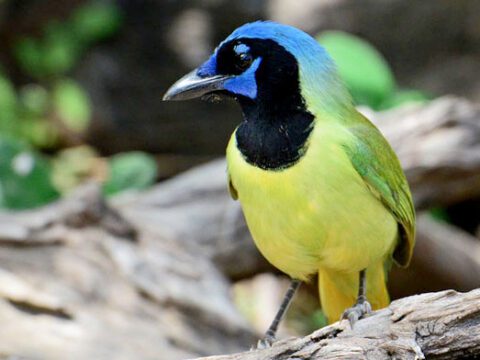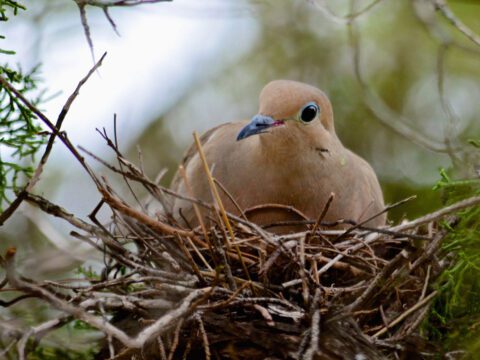Study: How the Amount of Daylight Affects Incubation Length
By Margaret Voss and Caren Cooper
July 15, 2011
Plants and birds begin life in surprisingly similar ways: both produce wonderful microcosms that protect an embryo (a seed or an egg). They come prepackaged with food and supplied with oxygen and warmth either by an incubating mother or by the first days of spring. Seeds also need light to gauge when it’s time to germinate, despite being buried underground. So is it a stretch to wonder if eggs might respond to light as well?
Decades ago, poultry producers discovered it’s not such a stretch: artificially incubated chicken eggs developed faster under lights than in the dark. They termed this phenomenon photoacceleration. We decided to see whether wild bird embryos photoaccelerate. As ecologists, we found this idea intriguing because it might help explain the relatively long incubation periods we observe in the tropics versus in higher latitudes.
We designed two experiments using eggs from wild House Sparrows: one to see if longer daylight would cause photoacceleration, the other to measure the metabolism of eggs during daylight and in the dark. We set up artificial incubators with identical temperature, humidity, and airflow that differed only in their lighting schedule: one mimicked tropical days, with 12 hours of light followed by 12 hours of darkness. The other imitated a northern summer: 18 hours of light and 6 of darkness. We collected each egg the day it was laid and assigned it randomly to one of these treatments. The embryos exposed to more daylight hatched about 1 day faster than embryos in other eggs: they had photoaccelerated.
In the second experiment, we found out why those “extra daylight” eggs hatched a day sooner. When we measured an egg’s metabolic rate during daylight it averaged 1.5 times higher (the amount varied with age) than when we measured it at night. That means embryos inside eggs grew faster when it was light outside than when it was dark—even though the temperature was kept exactly the same. When you add up that difference over a House Sparrow’s 11-day incubation period, it’s enough to account for the 1-day head start the “extra daylight” eggs showed. We did our experiment in incubators, but our measurements of light levels inside nest boxes suggest they’re well-lit enough to achieve the effect, too. We published our results in Functional Ecology earlier this year.
Our findings may also help explain the variety of eggshell colors and patterns—perhaps they allow birds to fine-tune their incubation schedules. The two main pigments in eggshells may filter out some harmful wavelengths of light (such as UV-B) while allowing other wavelengths to pass through.
The idea that light or eggshell pigments could actually regulate embryo development is a novel concept in avian ecology. During our study we noticed white, blue, and gray House Sparrow eggs. We’ve now started a study to see whether those colors affect egg development.
Would you like to help us? If you participate in NestWatch and have House Sparrow nests, please contact caren.cooper@cornell.edu for information on how you can help. With just a little extra work, we may uncover another piece of the process by which an egg becomes a baby bird—and discover a new reason for the variety of egg colors that no one has yet guessed at.
Margaret Voss is an associate professor at Pennsylvania State University, Erie. Caren Cooper is a research associate at the Cornell Lab of Ornithology.
Originally published in the Summer 2011 issue of BirdScope.

All About Birds
is a free resource
Available for everyone,
funded by donors like you
American Kestrel by Blair Dudeck / Macaulay Library




